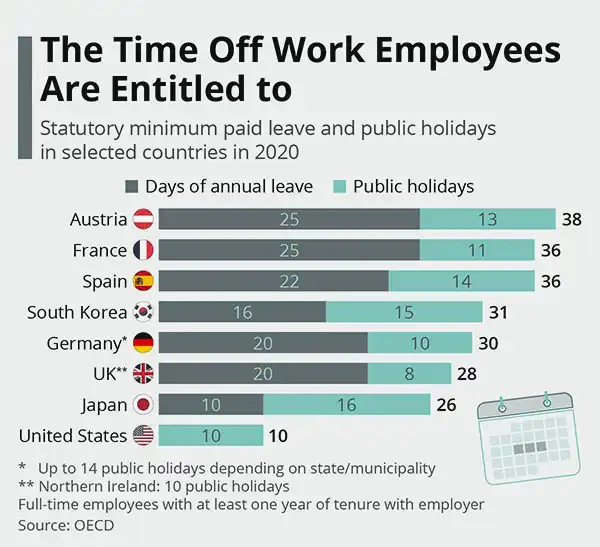6 Ideas on Making a Better Work Schedule

KEY TAKEAWAYS
- A good work schedule for employees balances personal and professional life with ease.
- Implementing predictive and job-sharing arrangements allows workers to plan properly without neglecting their office priorities.
- Giving workers more control over their leaves boosts productivity and encourages employee retention.
A well-structured work schedule can be a game-changer for both employees and employers. It can boost productivity, enhance personal and professional balance, and promote a healthier work environment.
Besides, managing the entire timetable also enhances teamwork which is relevant for any company’s growth. It also indirectly impacts the mental health of employees and therefore their willingness to embrace office regulations positively.
This comprehensive guide explores six ideas on how to make a better work schedule when you are a business owner, manager, or employee.
Embrace Flexibility
Flexibility in office schedules is significant, given the changing dynamics of the modern workplace. Flexible arrangements enable workers to customize their roster to their needs.
Whenever possible, consider allowing employees to work remotely which could be part-time or full-time. Remote work can boost productivity and improve personal and professional balance.
Allow workers to choose their start and end times within a defined window. This adaptability accommodates varying commutes, personal obligations, and individual preferences. Leverage web-based time tracking tools to monitor remote office hours and tasks, ensuring accountability and transparency.
Explore options for compressed workweeks, such as four 10-hour official days instead of five 8-hour days. This arrangement can provide more extended weekends, reducing stress and burnout.
The graph below shows a few countries that offer the selected number of paid leaves and public holidays.

Implement Predictive Scheduling
Predictive scheduling involves creating office schedules well in advance, providing workers with stability and consistency. This practice is particularly significant for industries with hourly workers.
Invest in scheduling software that allows you to create and share timetables efficiently. These tools often include forecasting features to predict staffing needs accurately. Arrange a calendar of officers in advance, preferably two to four weeks ahead.
This allows them to plan their personal lives and commitments accordingly. Aim for consistency by keeping shift times and days as consistent as possible.
Offer Flexible Time Off Policies
Time off is necessary for employee well-being and work-life balance. Employers should offer various leave options to accommodate multiple needs, including vacation, sick, personal, and parental leave.
Consider implementing unlimited paid time off (PTO) policies, which give workers more control over their leave. This can be particularly appealing for attracting and retaining top talent. Provide generous paid family leave options, including maternity and paternity leave, and leave for caregiving responsibilities.
Allow employees to take wellness days when needed without requiring a doctor’s note. These days can help them recharge and address their mental and physical health.
DO YOU KNOW
The Netherlands ranks among the best work/life balanced countries with an average 29-hour workweek.
Optimize Shift Scheduling
Optimizing shift scheduling is pertinent for businesses that operate around the clock or have variable workloads. This involves aligning employee shifts with peak demand periods while avoiding overstaffing during slower times.
Use historical data and predictive analytics to forecast customer demand accurately. This data-driven approach helps schedule the right number of workers at the correct times. Implement rotating shifts or shift bidding systems that give employees a say in their rosters.
This can improve employee satisfaction and accommodate various preferences. Cross-train people to perform multiple roles, allowing for a hybrid work environment in shifts and reducing the need for excessive overtime.
Consider Part-Time and Job Sharing
Not all employees seek full-time positions; some prefer job-sharing arrangements where two workers split the responsibilities of one full-time role. Offering part-time jobs and job-sharing opportunities can attract diverse talent and provide scheduling flexibility. Ensure that part-time and job-sharing positions have well-defined responsibilities and expectations to avoid confusion.
Facilitate communication between part-time or job-sharing officials to ensure a smooth transition between shifts or days worked. Allow for adjustments in the number of hours part-time employees work, provided it aligns with business needs and workload.
Monitor and Adapt
Creating a better office timetable is an ongoing process. It’s relevant to continuously monitor the effectiveness of your scheduling practices and adapt as needed based on feedback and changing circumstances.
Encourage workers to provide feedback on the current scheduling practices. Listen to their suggestions and concerns and make adjustments accordingly. Establish KPIs to assess the impact of scheduling changes on productivity, employee satisfaction, absenteeism, and overall business performance.
Keep abreast of legal requirements related to scheduling, as labor laws and regulations can change. Ensure compliance with laws governing overtime, break times, and other scheduling-related matters.
The Importance of a Well-Designed Work Schedule
A well-crafted work schedule aligns with energy levels and peak concentration periods, increasing productivity. It helps officials focus on relevant tasks correctly, minimizing wasted time and effort.
A balanced office calendar also allows them to maintain a healthy equilibrium between their professional and personal lives. This, in turn, leads to improved job satisfaction and reduces burnout.
Employees with more control over their work rosters are happier and more engaged. They appreciate the adaptability and autonomy that a well-designed calendar provides.
An accommodating office timetable can reduce absenteeism by allowing workers to address personal commitments without taking unplanned leaves. In customer-facing industries, aligning rosters with peak customer demand ensures better service quality and customer satisfaction.

Creating a better office timetable involves prioritizing compliance, predictability, and employee well-being. Embracing flexibility, implementing predictive scheduling, offering flexible time-off policies, and optimizing shift scheduling is relevant.
Businesses should also consider part-time and job-sharing arrangements, and continuously monitoring and adapting, that benefit employees and the organization. A well-designed work schedule is an investment in employee satisfaction, productivity, and the company’s long-term success.










